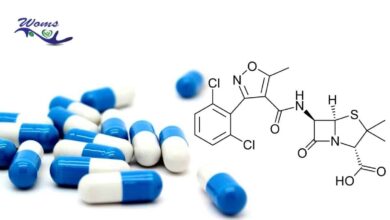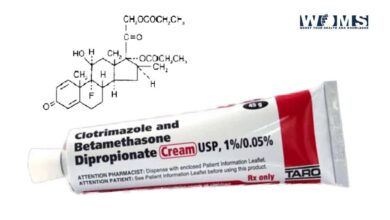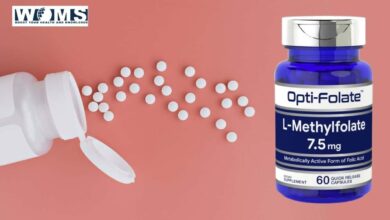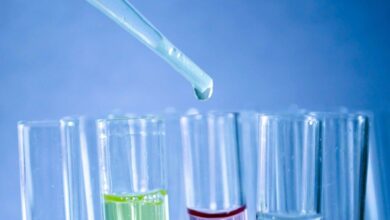ACLS drugs and what they do?

ACLS drugs stand for Advanced Cardiovascular Life Support drugs. ACLs are the set of clinical algorithms used in urgent or emergency conditions such as cardiac arrest, stroke, etc.
ACLs drugs are also called emergency drugs because they are used in emergency conditions.
Classification of ACLS Drugs
The classification of ACLs Drugs are given below:
| Drug Name | Type or Property of drug |
| Adenosine | Antiarrhythmic drug |
| Atropine | Anticholinergic drug |
| Dopamine | Catecholamine vasopressor |
| Amiodarone | Antiarrhythmic drug |
| Epinephrine | Catecholamine vasopressor |
| Lidocaine | Antiarrhythmic |
| Magnesium sulfate | Electrolyte or bronchodilator |
| Vasopressin | Antidiuretic hormone analogue |
| Oxygen | Atmospheric or elemental gas |
| Sotalol | Anti-arrhythmic drug |
Common ACLS drugs and uses
The commonly used ACLs drugs and their uses are described below.
ACLS drugs and doses are also mentioned below.
Adenosine
Adenosine is an Antiarrhythmic drug. It is used to treat Supraventricular Tachycardia or paroxysmal supraventricular tachycardia.
Adenosine is also used for the treatment of wide QRS tachycardia. Tachycardia with a QRS duration >120 ms.
Cardiac conduction is the result of adenosine intake through an intravenous route in the form of rapid bolus and this may also affect the re-entry pathways.
Red blood cells (RBCs) and endothelial cells absorb the adenosine instantly after intake and start the process of metabolism in the body for natural uses. Adenosine is significant when it reaches the heart so it should be given in rapid IV bolus.
The half-life of Adenosine is 5 seconds.
Side Effects of Adenosine:
Adenosine has some side effects. Side effects of adenosine administration in ACLs are:
- Chest Pain
- Bradycardia
- Chest Tightness
- Headache
- Flushing
- Dyspnoea (Feeling of chest tightness or shortness of breath)
- Flushing (Redness on the skin)
Contraindications
- Adenosine is contraindicated in polymorphic wide-complex tachycardia.
- Contraindicated in unstable Ventricular tachycardia.
- Contraindicated in second or third heart block.
Atropine
Atropine is an anticholinergic drug used in the treatment of Symptomatic Bradycardia. It is a first-line drug used in bradycardia, helps in increasing heart rate.
Symptomatic Bradycardia is a medical condition in which your heartbeat becomes slower than normal. Result in dizziness, faintness, and feeling of difficulty in breathing, etc.
Atropine is used to monitor blood pressure, oxygen, and electrocardiogram (ECG)
ACLs drug and dose of Atropine
- Atropine is administrated 0.5 mg through IV or IO route every 3 to 5 minutes and the maximum dose of atropine is 3 mg.
- It can be administrated through an endotracheal tube. A tube is used to help the patient in breathing by inserting it into the mouth. Atropine is ACLS endotracheal drugbecause it is directly administrated through an endotracheal tube.
- Give 500micro gram of atropine dose every minute when needed, but should not exceed the limit of 3mg.
Atropine is also used to treat toxins, poisons, and overdoses.
- It is administrated 2-4 mg to remove toxins.
- Don’t administrate an atropine dose lower than 0.5mg because this decrease dose aggravates the bradycardia.
Side Effects of Atropine
- Anxiety
- Dry mouth
- Constipation
- Photophobia. Light sensitivity or a medical condition in which you are afraid of the light.
- Blurred vision
- Painful urination or Painful urination
Contraindications
- Atropine is contraindicated when bradycardia is due to hypothermia.
- Also contraindicated in Mobitz type II.
- It is contraindicated in glaucoma.
- Contraindicated in tachyarrhythmias.
Hypothermia is a medical condition that occurs when your body drops its temperature faster than normal.
Dopamine
Dopamine is a naturally present catecholamine vasopressor used in the treatment of low Bp, heart rate, especially in neonates. It is the second-line drug in treating bradycardia when atropine is not effective.
- It is used to increase heart hate in bradycardia. IV is the route of administration of dopamine.
- Vasoconstriction and elevated heart rate are caused due to higher doses of dopamine.
- Dopamine is used to monitor blood pressure and electrocardiogram (ECG).
ACLs drug dose of dopamine:
- It is administrated 2 to 20 mcg/kg every minute.
Side Effects of Dopamine
- Headache
- Irregular heartbeat
- Acute renal failure
- Dyspnoea
- Nausea
Contraindication:
- Contraindicated in persons which have symptoms of cardiogenic shock.
- Do not use it with alkaline solutions.
Amiodarone
ACLs drug amiodarone is an Antiarrhythmic drug used for the medication of tachyarrhythmias(Abnormal rhythms of heart, the heart beats more time than normal condition). But Amiodarone has also many side effects and toxicity, so it should not exceed the fixed limit.
ACLs drug amiodarone is also used to treat supraventricular arrhythmias and ventricular arrhythmias.
- The heart beats abnormally and disturbs the upper chamber of the heart this condition is called Supraventricular arrhythmias or Supraventricular Tachycardia.
- The heart beats abnormally and disturbs the lower chamber of the heart this condition is called ventricular arrhythmias.
Amiodarone is the first choice of drug for the treatment of ventricular arrhythmias but the mechanism of amiodarone is unclear or why it has Antiarrhythmic properties.
Amiodarone is used to monitor blood pressure and electrocardiogram (ECG).
Route of administration of amiodarone is IV or IO. In the Intraosseous (IO) route, the drug is directly introduced into the bone marrow.
ACLs drug Amiodarone dose
Let’s see about ACLs drug and dose of Amiodarone. Do not give the dose of Amiodarone more than 2.2 grams within 24 hours. Otherwise, it may prove harmful or toxic.
- Give dilution of 300mg rapid infusion in 5% D.W. The quantity of D.W should be 20-30 ml. Followed by 900mg rapid infusion in 24 hours for the treatment of ventricular arrhythmias or ventricular fibrillation.
- Give 300mg of Intravenous infusion in 20-50 minutes, followed by 900 mg in 24 hours for the treatment of supraventricular arrhythmias.
Side Effects of Amiodarone
- Headache
- Tremors
- Ataxia. It is a neurological disease that affects the coordination and movement of muscles.
- Syncope
- Diarrhea
- Skin discoloration
- Hair loss
- Torsade’s de pointes
- Exceed dose of amiodarone can also cause many harmful side effects. You should be careful in the use of this ACLs drug.
Contraindication
- For patients which do not have a pacemaker (a device used in the treatment of arrhythmias), amiodarone is contraindicated in them.
- Used carefully in patients having a perfusing rhythm.
- Contraindicated in second or third heart block.
Epinephrine
Epinephrine is a Catecholamine vasopressor, listed in ACLs algorithm normally released in stress conditions used in the treatment of:
- Symptomatic bradycardia: Decreased Heart Rate
- Cardiac arrhythmias
- Pulseless electrical activity (PEA)
- Pulseless ventricular tachycardia (PVT)
- Ventricular fibrillation (VF)
- Epinephrine is used to monitor blood pressure, oxygen, and electrocardiogram (ECG).
- Epinephrine increases heart rate to treat Symptomatic bradycardia.
- Increase the force of contraction.
- Epinephrine is also used in the treatment of the severe type of hypotension or it is the ACLs drug for hypotension treatment.
This ACLs emergency drug is used to treat anaphylaxis. Anaphylaxis is an allergic reaction that sometimes may be fatal or life-threatening.
Epinephrine is an effective drug or recommendation in symptomatic bradycardia after atropine. When atropine fails to show the result or after pacing, it is the best choice of drug.
Epinephrine is included inAsystole Algorithm.
Administration dose of ACLs drug Epinephrine:
- In anaphylaxis treatment, 0.3-0.5 mg dose of epinephrine is administrated through IM
- In Symptomatic bradycardia/Shock treatment, 2 to 10 mcg/min infusion.
- The route of administration of Epinephrine is IV, IO, and ETT or Endotracheal drug therapy. Epinephrine is ACLs Endotracheal drug because it is directly administrated through an endotracheal tube.
Side Effects of Epinephrine
- Tremors
- Confusion
- Supraventricular tachycardia (SVT)
- Ventricular tachycardia (VT)
- Hyper-glycaemia: The level of blood glucose in the body becomes increases.
- Hypokalaemia
Contraindications
- Administration of epinephrine is contraindicated in high blood pressure, it may cause myocardial ischemia, angina.
- Contraindicated in cocaine-induced VT.
- High doses prove harmful and may cause serious medical conditions like myocardial dysfunction.
Lidocaine
Lidocaine is a type of ACLs emergency drug which is Antiarrhythmic.
Lidocaine is only recommended when amiodarone is not present. Lidocaine is used to treat wide complex tachycardia. It is effective to treat the shock-refractory VF/pVT with amiodarone or it may also use as an alternative to amiodarone for the treatment of VF/Pulseless VT.
Lidocaine depresses automaticity and excitability.
The route of administration of lidocaine is Intravenous for the treatment of ventricular arrhythmias. (VT/VF).
Lidocaine is used to monitor blood pressure and electrocardiogram (ECG).
Lidocaine dose or ACLs drug dose:
- For the treatment of cardiac arrest due to ventricular arrhythmias. (Pulseless VT/VF), the initial dose should be 1-1.5 mg /kg.
- For the treatment of stable VT, the initial dose should be 0.5-0.75 mg /kg.
Side Effects of Lidocaine:
- Seizures
- Bradycardia
- Dyspnoea
- Drowsiness
- Blurred vision
- Hypotension
- Rash
Toxicity of Lidocaine
Symptoms of lidocaine toxicity are muscle twitching, seizures, tingling, etc.
- Liver dysfunctionmay increase the toxicity level of lidocaine due to the metabolism of lidocaine through the liver.
- Low protein may elevate the toxicity of lidocaine because lidocaine has protein binding ability.
- Acidosis may also become the reason for elevating lidocaine toxicity levels.
- An increased accumulation of acids in body fluids is called acidosis.
Do carefully use it in the case of renal failure.
Contraindications:
- In sinus bradycardia
- In atrioventricular blocks
- Lidocaine is contraindicated in any type of hypersensitivity.
- It is contraindicated in acute myocardial infarction.
Magnesium sulfate
Magnesium sulfate is an electrolyte or bronchodilator, decreases the automaticity and causes vasodilation. Magnesium sulfate is used in the treatment of:
- Polymorphic ventricular tachycardia.
- Torsade’s de pointes with pulse
- Digitalis toxicity
- Hypomagnesemia: Level of magnesium decrease in blood. You can use chlorine to treat hypomagnesemia.
But it can cause hypotension due to rapid administration.
ACLs drug dose or Magnesium sulfate dose of administration
- 1 to 2 g dose of magnesium sulfate diluted in 10 ml D5W and administrated through IV.
- In the case of cardiac arrest, 1–2-gram bolus through IV route.
Side Effects of Magnesium Sulfate
- Sedation
- Respiratory depression
- Hypotension
- Muscle cramping
- Bradycardia
- Cardiac arrest
Contraindications:
- Carefully use in patients having renal complications.
- It is contraindicated in patients which are suffering from central nervous system depression.
- It is also contraindicated in hypermagnesemia
An increased level of magnesium serum in blood results in hypermagnesemia.
Vasopressin
Vasopressin is an antidiuretic hormone analogue, now removed from ACLs emergency drugs.
Vasopressin is also called an antidiuretic hormone (ADH).
In researches, it was proved that there is no benefit of administrating both vasopressin and epinephrine at the same time. Due to this reason, it is removed from the list of ACLS alogorithm.
Vasopressin is excluded from the ACLs algorithm just to enhance its simplicity and for easiness. It is removed from ACLs algorithm in 2015 guidelines.
- Vasopressin is used in the treatment of asystolic cardiac arrest and it is more beneficial than epinephrine in this.
- First choice of drug in pulseless arrest algorithm.
- Vasopressin is used to monitor blood pressure.
- Vasopressin is included in the Asystole algorithm
Dose of Vasopressin
- 1 dose of 40 units administrated through IV or IO route
ACLs endotracheal drug
- It may also administrate through an endotracheal tube
Side Effects of Vasopressin:
- Arrhythmia: The rhythm of the heart increases or the heart beats more times than normal.
- Hypertension
- Abdominal cramping
- Hives or allergic reactions on the skin
- chest pain
Oxygen
Oxygen is an atmospheric or elemental gas used to treat hypoxia. Hypoxia occurs due to a low level of oxygen in the body.
- It is used in the treatment of respiratory distress or failure. Moreover, used to treat cardiac stress or trauma.
- Oxygen is used in monitoring the oxygen level.
ACLs drug dose of Oxygen
- The dose of oxygen administration depends upon the condition of the patient.
- Oxygen is administrated at 100% via a high flow system.
- The flow of oxygen should be 15 L/min for treating respiratory distress or failure.
Side Effects of Oxygen:
- Headache
- Dry nose,
- Dry mouth,
- When secretions become dry Obstruction of airways occurs.
Contraindications:
There are few contraindications of oxygen such as: Contraindicated in hypoxic patients.
Sotalol
- Sotalol is an anti-arrhythmic drug used in the treatment of Tachyarrhythmia
- Also used to treat Monomorphic VT
Dose of Administration of Sotalol
Sotalol administrated 100 mg through IV route over 5 min.
Contraindication
Its use is contraindicated in prolonged QT.
ACLs drugs asystole
There are two drugs included in this ACLs algorithm or Asystole Algorithm.
- Epinephrine
- Vasopressin
ACLS and BLS
- ACLS and BLSare two different methods to support life.
- ACLs stands for Advanced Cardiovascular Life Support.
- BLs stands for Basic Life Support.
- Various life-saving methods and Equipment are involved in BLs such as CPR, AEDs. Professionals are responsible to perform basic life support or BLs.
- ACLs are more advanced level to support life than BLs.
Takeaway
ACLs are the set of clinical algorithms used in urgent or emergency conditions such as cardiac arrest, stroke, etc.ACLs drugs are also called emergency drugs because they are used in emergency conditions.
The ACLs drugs and doses are given above. Similarly, their uses and contradictions are also mentioned. Most of the above are prescription drugs due to their potential harm if administered incorrectly (see otc vs prescription drugs for more info). I hope this article has helped you regarding ACLs drugs.
FAQs
What are ACLs drugs?
The ACLs drugs are also called emergency drugs. ACLs drugs are clinical algorithms used in urgent or emergency conditions such as cardiac arrest, stroke, etc.
What drugs are used in ACLs?
Drugs like Epinephrine, lidocaine, atropine, amiodarone, adenosine, and dopamine are used in ACLs.
Which drug is no longer used in ACLs?
Vasopressin drugs have been removed from ACLs and are no longer used in ACLs.
How many ACLs algorithms are there?
There are five ACLs algorithms and they are:
Cardiac arrest, Bradycardia, Tachycardia, Acute Coronary Syndrome, and Suspected Stroke Algorithm.
What are the essentials emergency drugs?
Oxygen, Salbutamol, Injectable antihistamine, Nitroglycerine, Aspirin, and oral carbohydrate.




